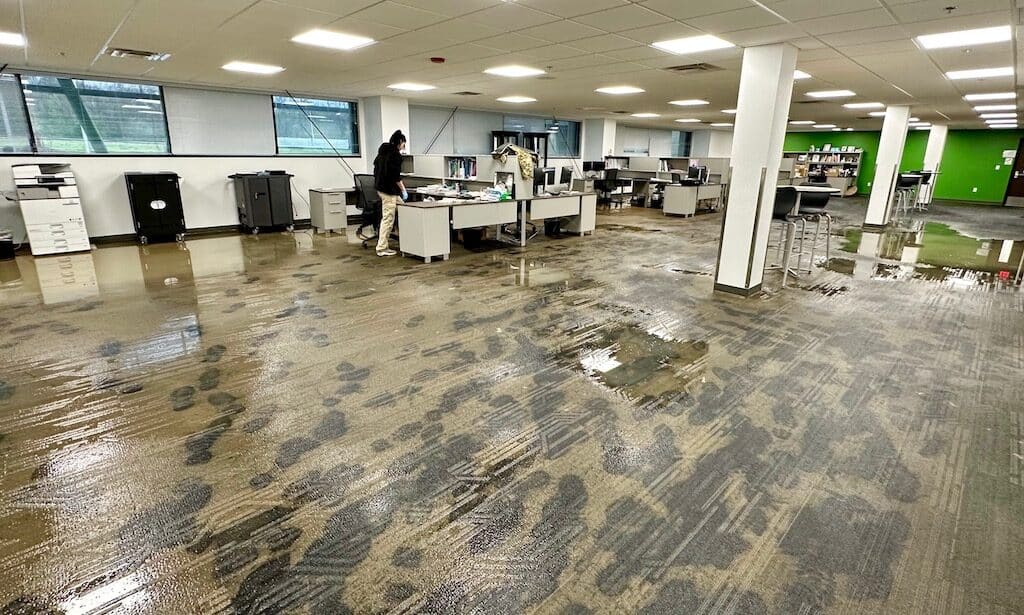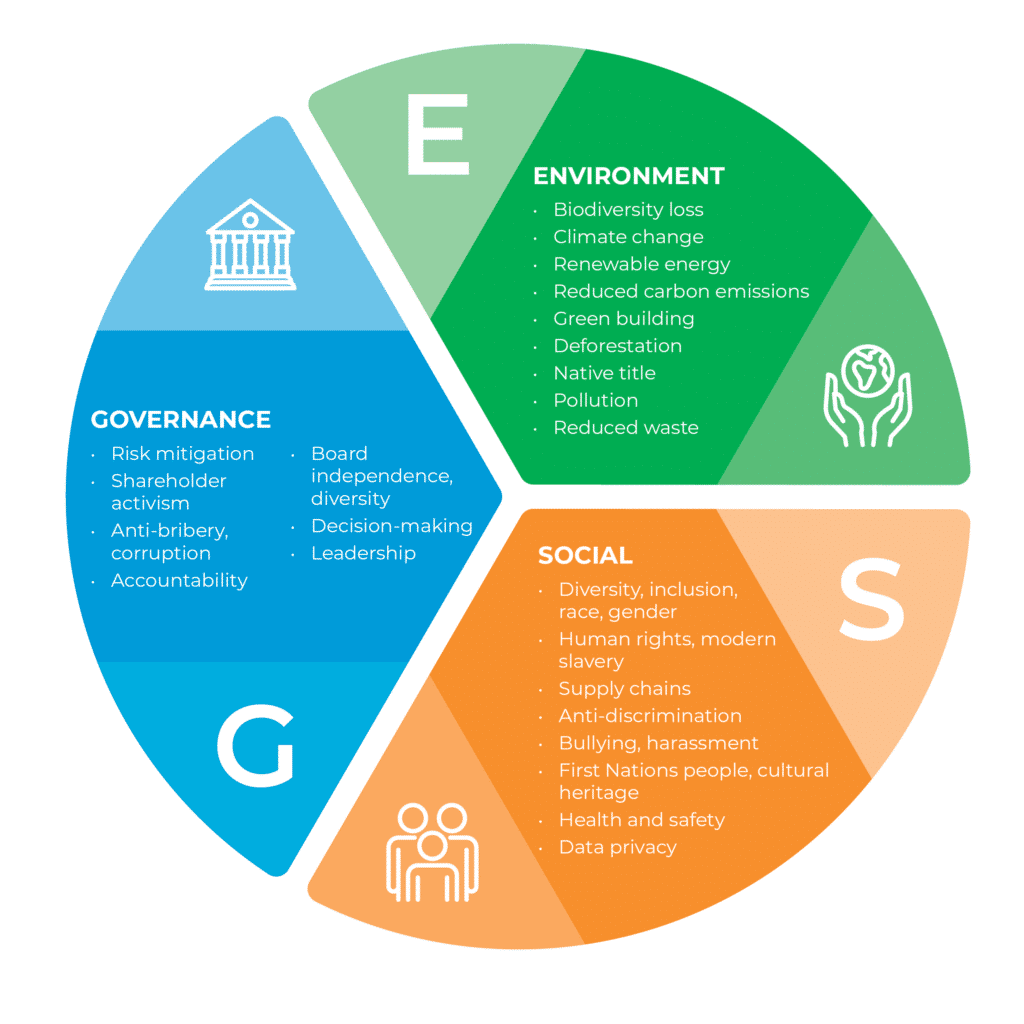When discussing sustainability, most people think of corporate sustainability policies that make bombastic claims but have little impact. In reality, sustainability is critical for the economic viability of a business and the protection of the planet we live on and the people we share it with.
Adopting and enforcing a sustainability policy in any organization is good for business. Consumers prefer sustainable brands, as shown by more than 60% of people saying they’d pay extra for a product with sustainable packaging.
Investors are interested in sustainability too, but instead focus on the risks companies may be exposed to. 88% of investors consider ESG issues in some form as part of their investment approach, whilst 31% of European investors say ESG is central to their decision making process.
Lawmakers are gradually making it mandatory to report your efforts to address the potential impact your organization has on the environment and community.
Whether obvious or otherwise, all businesses affect the environment and the community in which they operate, with some of the risks and issues common to all businesses.
What is a Sustainability Policy?
A Sustainability Policy is a document that outlines an organization’s commitment and strategy to addressing the ethical, environmental, and social aspects of the operations.
The key goals of sustainability policies in organizations are to ensure that the aspects mentioned above are taken into account in decision-making processes and to detail the ESG strategies implemented to secure the long-term viability of the business.
In addition, a sustainability policy presents a unique opportunity for businesses to showcase the core brand values that create positive brand sentiment in clients, investors, and candidates.
What is included in a Sustainability Policy?
While there’s no single global standard for sustainability policies, a general sustainability policy usually features the following:
- Your sustainability mission statement and core corporate ESG values.
- A summary of the key ESG impacts on business operations.
- A list of all relevant stakeholders, including the roles and responsibilities of each participant in the execution and enforcement of the policy.
- A strategy detailing the plans the business will execute to address these impacts.
- The short-term (usually annual) sustainability goals and aims of the business.
- A description of the continuous long-term efforts and resources you plan to dedicate toward sustainability initiatives over the coming years or decades.
- A statement of commitment on behalf of a relevant leader in the organization (usually the CEO).
- Date of policy review and renewal.
Why Your Business Needs a Sustainability Policy
Before we discuss the benefits of adopting a sustainability policy, it’s worth noting that in many industries and regions, having a corporate sustainability policy and ESG strategy is not a choice but a legal requirement necessary for business operations. Failing to comply with sustainability regulations can sometimes result in penalties, fines, and even imprisonment.
Regulations could continue to be implemented or altered by governments and governing bodies, especially as the focus on climate change and sustainability ramps up.
So why should you invest time in drafting a corporate sustainability policy?
- Prepare for changes in environmental, social, and economic aspects of business operations.
- Increase the efficiency and resilience of your supply chains.
- Improve your brand reputation with all relevant stakeholders: investors, buyers, business partners, and employees.
- Save expenses on operating costs (by adopting green energy and water-conservation initiatives).
- Demonstrate accountability and transparency both internally and to external stakeholders.
16 Risks Every Sustainability Policy Should Address
The right sustainability policy for your organization can’t be based on a template or copied from an example. Since every organization operates under different conditions and has different challenges, goals, and objectives, there’s no one-size-fits-all approach to preparing a sustainability policy that addresses all potential risks and opportunities in a global and rapidly shifting economy.
The sustainability risks that may be relevant for an international airline are not the same as the risks that an agricultural operation may need to address in its sustainability policy. That said, some social or environmental events or conditions can negatively impact all organizations, introducing risks driven by changing environmental, economic, and regulatory factors. Let’s review them.

Environmental Risks
The Environmental risks your policy should address pertain to how your business negatively impacts the environment and how changes or environmental events may impact your business.
While not all businesses have a direct impact on things like marine resources or biodiversity, it’s essential to look at the “big picture” and consider how your organization can reduce water consumption, manage waste disposal in a smarter way, and minimize air pollution by, for example, adopting a WFH policy for remote employees.
The environmental risks that every sustainability policy must address include:
1. Climate change impacts, including GHG emissions and corporate carbon footprint.
2. Resource scarcity and depletion must be addressed, especially if your business operates in an industrial field with a high dependence on rare metals, minerals, or fossil fuels.
3. Waste prevention and recycling as part of an overall sustainability strategy throughout the organization.
4. Deforestation that may be caused by real estate development and the production of wood-pulp products.
5. Water security and usage, as well as water conservation and leak prevention.
Water wastage is an increasingly devastating risk, with over 25% of the water entering a building, construction site, or industrial facility going to waste. Often going unknown, this waste amounts to a high carbon footprint and expensive bills. When a leak hits, this number increases.
As such, conserving water is becoming one of the more pressing issues for organizations to tackle. To counteract the large amount of vital water being wasted, consider implementing a solution like WINT’s advanced AI and machine learning technology, which monitors water flows and alerts staff as soon as anomalies are detected – enabling your team to take action; preserve water; protect your properties and prevent further damage or business downtime.
This technology is being used worldwide in large enterprises like Microsoft, HP, and Google, as well as in commercial buildings, industrial and governmental facilities, multi-family residences, and even iconic structures such as the Empire State Building.

Social Risks
Addressing the social risks in your sustainability policy entails promoting a working environment of equal opportunities, fair treatment, and ensuring that all organizational and supply chain activities and practices are ethical and sustainable.
This section of your sustainability policy should address the relationships your organization has with business partners, communities, and other stakeholders.
The social risks most businesses should include in their sustainability policy are:
6. Diversity, inclusion, and wage equality may be required by local regulations but are considered good practices even when they are not.
7. Potential health and safety risks to employees, contractors, and customers must be addressed, and you should include your plans for mitigating them.
8. Data privacy risks are covered under regulations like GDPR but should also be considered risks to the sustainability of a business.
9. Supply chain risks include issues like supplier business ethics, supplier reliability, and the availability of alternatives to the various links that make up your supply chain.
Governance Risks
Finally, a sustainable business must be built on a solid foundation of governance and compliance with laws and regulations. Therefore, your sustainability policy must address these risks, ensuring transparent communication and enforcing corporate ethics and values beyond the policy's wording.
Governance risks you should consider in your sustainability policy include:
10. Corporate integrity and ethics standards must be clearly stated in the policy, upheld, and communicated transparently to all stakeholders.
11. Anticompetitive behavior and business practices.
12. Compliance risks, including emerging and regional regulations, should be considered in your policy as early as possible.
13. Grievance procedures and systems allow customers and employees to submit named or anonymous complaints and feedback on ESG issues in the organization.
14. Corruption and fraud prevention.
15. Board structure and diversity.
16. Tax compliance is a critical aspect of doing business and is especially important for multinational companies that must comply with different regional laws and regulations.
Leveraging Innovation to Reduce Sustainability Risk
Innovation and cutting-edge technology hold the key to sustainable development and must be part of any organizational sustainability transformation. Water stress and waste for example, affects businesses of all sizes, across industries and geographies and is one of the risks of increasing carbon emissions.
Though the impact of water risks on your business life cycle can vary, addressing potential water mitigations as part of your sustainability policy can be an opportunity to reduce water consumption, cut water waste, and protect your facilities from damage and downtime to your business operation while also saving on costs and expenses through intelligent water management.
WINT offers a unique and comprehensive AI-powered water management solution that detects and stops leaks at their source using advanced algorithms. WINT system’s real-time water usage monitoring capabilities enable you to automatically identify, alert, and proactively shut down the water supply in a leak event to prevent water damage, reduce water consumption, and lower the carbon emissions the business generates – therefore complement every organization’s sustainability policy.


